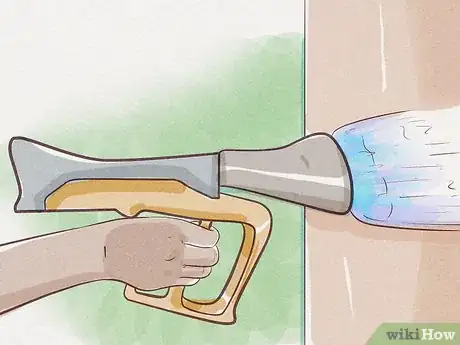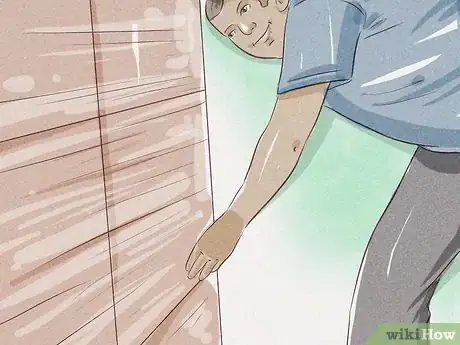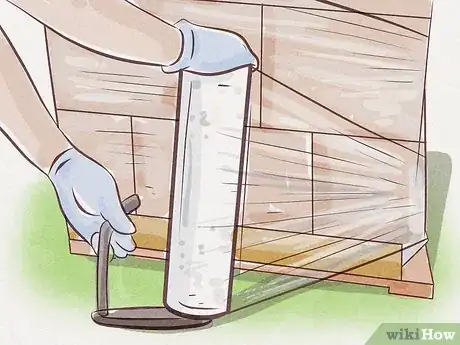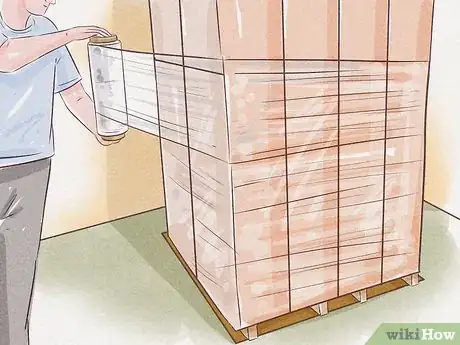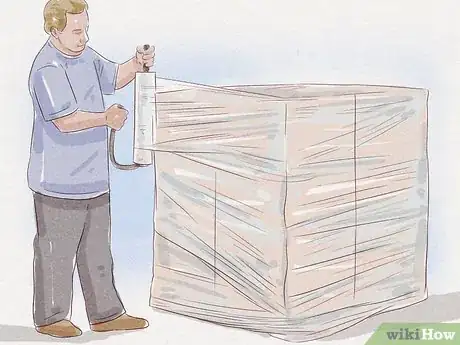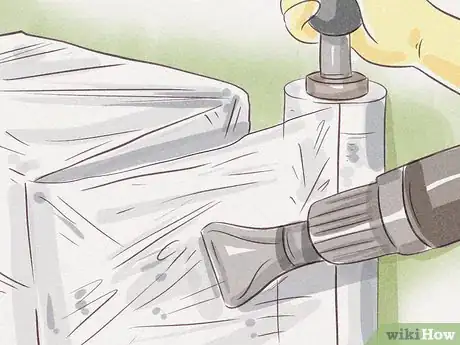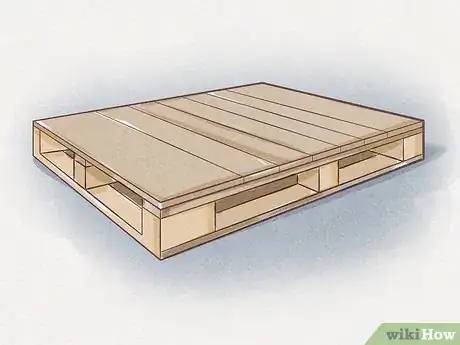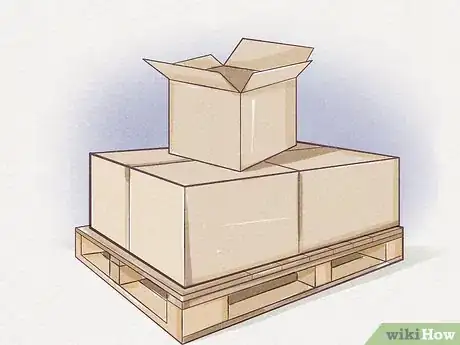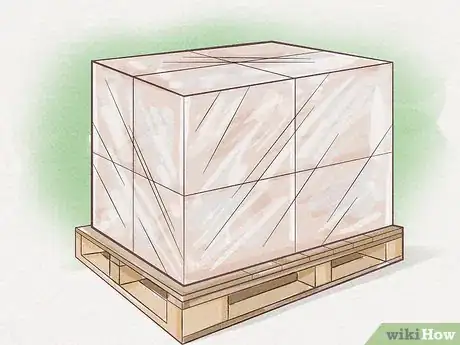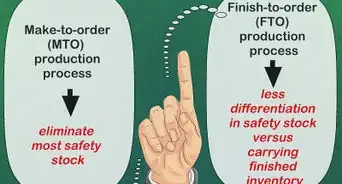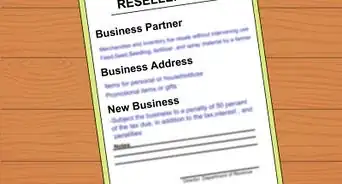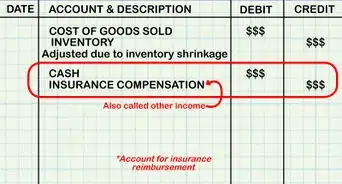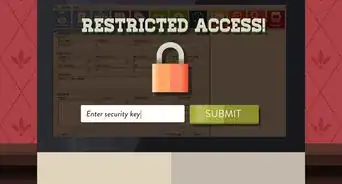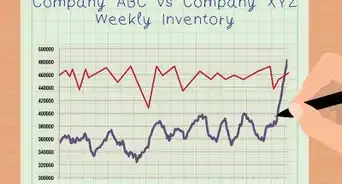This article was co-authored by wikiHow Staff. Our trained team of editors and researchers validate articles for accuracy and comprehensiveness. wikiHow's Content Management Team carefully monitors the work from our editorial staff to ensure that each article is backed by trusted research and meets our high quality standards.
This article has been viewed 123,576 times.
Learn more...
Shrink-wrapping is a packaging technique used to secure items to a pallet with either PVC or polyolefin plastic. The material used for shrink-wrapping is either a pre-sized bag plastic film bag or a roll of plastic film that is manually wrapped around the pallet and its items. Most proper shrink-wrapping involves heating the plastic film to seal items on the pallet to each other and to the pallet itself, though there are times when a tightly wrapped pallet might not require the application of heat. With a little guidance, you can properly stack a pallet and wrap it using a traditional heat shrink bag or plastic film that may or may not also be heated.
Steps
Shrink-Wrapping a Pallet Using a Heat Shrink Bag
-
1Place your heat-shrink bag over your items and pallet. If you do not have heat-shrink bags and are using manually applied film, use the steps in the guide "Preparing to Shrink-Wrap Using Manually Applied Film" below.
- Make sure that the bag is snug over the pallet and items. It does not need to be tight, but it shouldn't be too loose.
- Tuck the excess plastic at the bottom of the bag around the corners and edges of the pallet.
-
2Heat the shrink-wrap. Starting at the base, use your heat or shrink gun (or hairdryer, though it will be less secure and look less professional) to heat the plastic and cause it to shrink to the pallet and its items.[1] As each heat or shrink gun will have different operating and safety guidelines, be sure to follow their included instructions. A video guide including this step is attached at the bottom of this guide.
- After the base is secure, use your heating implement to secure the top of the bag to the items.
- Once the base and top are secure, use a slow back-and-forth sweeping motion to seal each side of your pallet.
- Each heating implement is different! Be sure to follow your separate instructions when it comes to operation, especially instructions which pertain to safety, how far to hold the shrink gun from the pallet, and how long to apply heat for.
Advertisement -
3Inspect your work. Being sure to first safely turn off and store your heating implement, you are now ready to inspect your work. A properly shrink-wrapped pallet should feel like a single unit, with no wobbling or instability of its contents. Congratulations! You have successfully shrink-wrapped a pallet.
Preparing to Shrink-Wrap Using Manually Applied Film
-
1Choose and prepare your PVC or polyolefin plastic film. Your pallet should be loaded per the instructions to stacking a pallet guide prior to applying film. Peel out approximately a yard of the plastic and squeeze 8 inches (20.3 cm) or so of the end together into a loose rope.
- PVC is the older, more common, and less expensive film. It is usually used to individually wrap items as it is more brittle than polyolefin.
- Polyolefin is newer and more expensive, but has less of an odor and is less brittle, making it a better choice for most heavy jobs.
-
2Secure and wrap the base of the pallet. Starting by threading the "rope" end of your film in and around one corner of the pallet, wrap your film around the pallet and the base of the items that you have stacked on the pallet.[2] You will want to keep the film tight without stretching or tearing it. Start slow until you get the hang of it.
-
3Make sure the base is strong. Always working in the same direction as you started, wrap the base enough times so that the plastic is snug. It should help by sticking to itself. Having a secure base is the most important part, so wrap it least four or five times. Make sure that the wrap goes around and under the corners of the pallet.
-
4Continue upwards to wrap the rest of the items. Rotating in the same direction, move up as you wrap film around the pallet and items, this will secure all items to the base of the pallet. Each layer should be wrapped firmly do the one below it, and so on. Be sure to take as much stretch as possible out of the plastic film while you are wrapping.
-
5Finish up wrapping. When you wrap the top of the pallet you can either end there or wrap back down the pallet again. If the job looks thin or loose, you will want to wrap back down to the base of the pallet. An insecurely wrapped pallet is a dangerous pallet. Once the pallet is firm, tear the film off of the roll and fold it under one of its own layers. This will keep your wrap job from coming undone.
-
6Heat the shrink-wrap, if necessary. For most heavy or industrial jobs you will want to heat the shrink-wrap to stabilize the pallet and ensure the safety of both the items and any people that might be working with them. This is especially true if the pallet is going to be either transported or stored for an extended period of time.
Stacking Your Pallet
-
1Prepare your workspace. You will want to be working in a clean, cool area with plenty of space on each side of the pallet to operate. You will want to be sure that your pallet is sturdy and the right size for all of your items.[3] Using a pallet that is either too large or too small will result in an insecure load that is a hazard to both your items and you.
-
2Stack the base of your pallet. If you are placing items of different sizes and weights on the pallet, be sure to put the largest and heaviest items on the bottom. Try to occupy as much space as possible without any gaps. Having a tight, secure base is essential to the stability of the pallet.
- Don't leave too much space between your items and the corners of the pallet. This can cause the plastic to tear after shrink-wrapping.
- Neatly organizing the base of your pallet will make the rest of your job much easier. Use time and take care on this step, and you'll be saving yourself time and energy in the long run.
-
3Stack the rest of your pallet. Place your remaining items on the pallet, organizing them in a stable way that occupies as much of the square footage of the base as possible without going over its edges. All items should be as close to one another as possible, with little or no space between them to shift.
- Make sure that all items are stacked as closely and neatly as possible. If they are loose or unorganized they can shift within the shrink wrap, rendering it ineffective and potentially endangering both your items and people.
- Don't stack your pallet too high. The ideal shape for a pallet is a cube. Stacking a pallet too high can make the pallet too big for a heat shrink bag and destabilize the load by raising the center of gravity.
Community Q&A
-
QuestionHow do you select the right grade of shrink wrap for a pallet?
 Community AnswerThat depends on what you are wrapping. If you are wrapping tall pallets, regular grade would work, but if you're wrapping pallets with vinyl planks, or anything that's heavy or slippery you should use a higher grade.
Community AnswerThat depends on what you are wrapping. If you are wrapping tall pallets, regular grade would work, but if you're wrapping pallets with vinyl planks, or anything that's heavy or slippery you should use a higher grade. -
QuestionDo pallets have a SWL LIMIT ?
 Mzm555Top AnswererYes, all pallets have an Safe Working Load limit, however on un-labelled or custom made pallets this information is difficult or near impossible to obtain. For most hardwood pallets such as Chep, Loscam, or Euro pallets, the maximum SWL on an evenly stacked pallet is 1500kg (3307lbs) but really the ideal safe and workable maximum SWL is 1000kg (2204lbs). In any case, if you are unsure of how much weight to stack on a pallet in your workplace, ask a co-worker or supervisor for advice, especially if it is a pallet to be put up in pallet racking.
Mzm555Top AnswererYes, all pallets have an Safe Working Load limit, however on un-labelled or custom made pallets this information is difficult or near impossible to obtain. For most hardwood pallets such as Chep, Loscam, or Euro pallets, the maximum SWL on an evenly stacked pallet is 1500kg (3307lbs) but really the ideal safe and workable maximum SWL is 1000kg (2204lbs). In any case, if you are unsure of how much weight to stack on a pallet in your workplace, ask a co-worker or supervisor for advice, especially if it is a pallet to be put up in pallet racking.
Warnings
- Make sure your pallet is stable and that it is tightly and securely shrink-wrapped. An improperly stacked or shrink-wrapped pallet can be very dangerous.⧼thumbs_response⧽
- All shrink-wrap equipment is different. Be sure to review the instructions for both your heating implement as well as your plastic shrink-wrap.⧼thumbs_response⧽
- Different types of shrink-wrap (PVC and polyolefin) are designed for different jobs, and each has different gauges of wrap. Make sure that your type of shrink wrap and its gauge is the right type for your job.⧼thumbs_response⧽
References
- ↑ http://www.uspackagingandwrapping.com/Shrink-Film-101.html
- ↑ http://www.aalhysterforklifts.com.au/index.php/about/blog-post/how_to_stretch_wrap_pallets._6_simple_tips_to_follow
- ↑ http://www.aalhysterforklifts.com.au/index.php/about/blog-post/how_to_stretch_wrap_pallets._6_simple_tips_to_follow
- Videos provided by Kite Packaging

